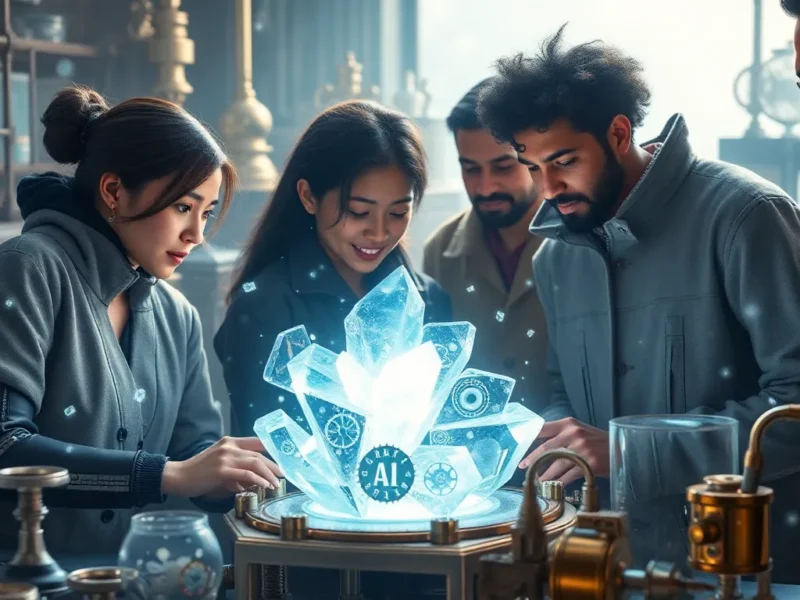Bio-AI Fusion: Engineering Smarter Organisms Through Artificial Intelligence
Right now, we’re living in a sort of scientific twilight zone where our ability to fuse the realms of biology and artificial intelligence (AI) is making old science fiction tropes seem, well, not so fictional anymore. But what does it really mean to blend AI and biology? Could we grow a tadpole with a silicon-based nervous system? Can a plant learn and make decisions like a human? Let’s sort it out together.
The Promising Dance of Biology and AI
When you mesh biology and AI, you get Bio-AI, a field centered around using computational models to understand biological systems and leverage that understanding to build AI systems. Honestly, it sounds like something out of a sci-fi movie, right? But wouldn’t you know it, some of the smartest brains in the world are finding ways to make it work.
Scientists are using machine learning to analyze huge amounts of data to understand patterns in genes, environments, and diseases. Think about how researchers used AI to accelerate the development of the COVID-19 vaccines. These efforts to make predictions about complex biological systems have the potential to revolutionize healthcare, agriculture, environmental studies, and much more.
So yes, it’s early. But the early signs are promising. And a lot of people are starting to sit up and take notice.
How Artificial Intelligence Enhances Biological Research
Okay, let’s cut to the chase: How does AI help biological research?
AI allows for high precision, automatic data analysis. For instance, a task like identifying and measuring cells could take a researcher hours or days. AI can hypothetically do it in minutes. It’s almost like having a superpowered microscope that sorts, counts and categorizes while you sit back and watch.
That’s not even touching on the predictive power of AI. Machine learning algorithms can use past data to predict future occurrences with incredible accuracy. It’s pretty wild, but it’s happening. And it’s already making a difference – in medicine, in ecology, in countless fields.
Practical Approaches of Bio-AI
The coolest thing about Bio-AI is that it’s not just confined to big labs and fancy computers. It’s increasingly becoming part of the toolkit for everyday biologists. How, you ask?
Well, there are tools like BioPerl and BioPython which provide bioinformatics libraries for Perl and Python. These libraries can help researchers handle biological data and perform complex tasks with relative ease.
Then there are open-source tools like TensorFlow, PyTorch, and Keras for machine learning which make it possible for scientists to create predictive models that analyze and learn from data patterns.
These tools are blurring the lines between biology and computer science, making the impossible, sort of possible.
Potential Challenges
So, yeah… where does it all get tricky?
While AI can prove to be an invaluable tool in biological research, there are a few potential issues. For starters, biological data, whether it’s genetic sequences or cellular structures, is complex. Handling and interpreting this data can be challenging for AI, as well as for those who program it.
And then there’s the question of interpretability. Even when an AI system can successfully make predictions, it can be tough to understand why it made those predictions, which can lead to issues in its application within biology.
And, of course, there’s always the ethical conundrum. The use of AI in biology could lead to technological advancements we’re not quite ready to grapple with as a society. And that could, you know, backfire. So it’s something we’ll have to be prepared for.
FAQs
What is Bio-AI Fusion?
It’s an interdisciplinary field where biology and artificial intelligence intersect, aiming to harness computational powers to understand biological systems and use that understanding to develop advanced AI systems.
How does AI help in biological research?
AI helps automate and speed up the process of analyzing complex data. Particularly through machine learning, AI algorithms can predict future occurrences based on past data.
What are some of the challenges in Bio-AI Fusion?
The complexity of biological data, the interpretability of AI predictions, and ethical considerations are some of the challenges in Bio-AI fusion.
So, What’s the Bottom Line?
Bio-AI fusion? A big deal. It’s quite literally reshaping the way we see and understand the natural world. Can it solve all our problems? To be fair, no. Will it bring about some challenges? Absolutely. But it’s hard to overstate just how much impact it could have.
So, here’s what you’ve gotta remember: AI is not just for tech geeks anymore – it’s becoming a crucial tool in an ever-growing list of fields. And as we continue to figure this all out, we’re bound to run into some mind-boggling, and maybe even a bit scary, potential.
So, sure, it’s early. But from here? We can only go up.


